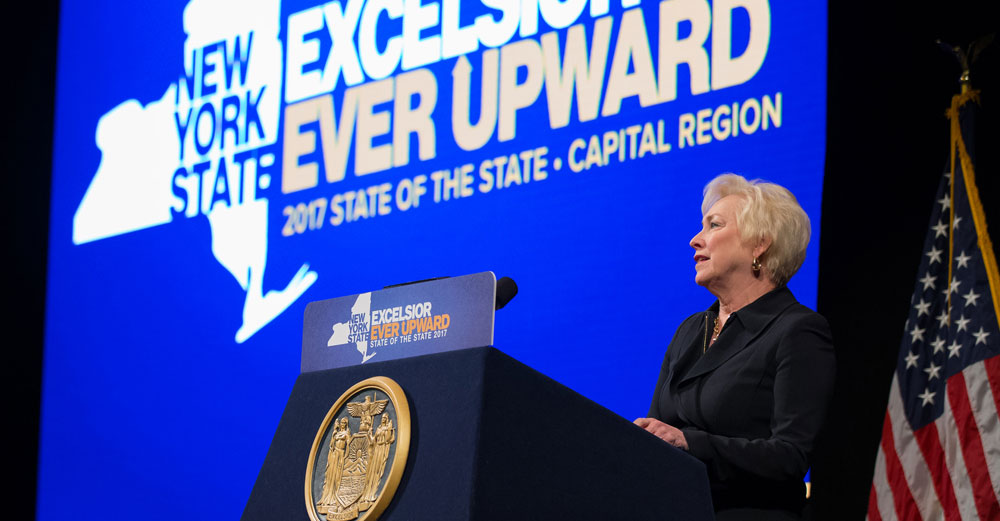
As SUNY chancellor for the last eight years, I have seen many landmark education policies come to fruition to better serve New York State students now and long into the future. Together, we have made transfer seamless for students, retooled our commitments to diversity and inclusion, and even leveled the threat of unexpected tuition hikes for a time.
These were necessary reforms, and that’s not all they had in common. At the onset of each, there were those who said it couldn’t be done. That we were reaching too high, too fast. Such opposition is often an early indicator that you’re onto something big. Hint of a sea change that will have a lasting impact.
This is happening again now, as New York deliberates on the prospect of tuition-free public college.
As chancellor of the country’s most comprehensive system of public higher education and a member of the College Promise National Advisory Board since its founding, I have closely monitored tuition-free programs as they have launched in states across the country. I know what it takes to implement one effectively, and I can say, with certainty, that Governor Cuomo’s Excelsior Scholarship proposal has the potential to really make a difference for our students, and in turn, our state.
I want to clear the air about specific concerns that have been raised about the program because this is an immense opportunity in our state’s history and we cannot afford to let it pass us by.
The governor’s Excelsior Scholarship Program will provide a tuition-free SUNY or CUNY education for students in families with an income up to $125,000, costing an estimated total of $163 million per year over the next three years. Some say a smarter investment would be to funnel more money into the state’s generous Tuition Assistance Program (TAP) so that students who choose a private college education can benefit as well.
For more than 40 years, TAP has increased access to college for millions of students. It is truly a state-funded financial aid program unlike any other. TAP provides nearly 100,000 private school students with more than $300 million in aid each year – only Texas invests more. On the public side, nearly 200,000 SUNY and CUNY students receive a combined total of more than $640 million in TAP annually.
Without question, the program is a worthwhile investment. But there is good cause to do even more. TAP is limited in that it only provides students with money. It doesn’t challenge them to protect that investment by completing their degree on time, and it doesn’t promise them the tools, services, and supports they will need to succeed in college and after.
Excelsior does. It is designed not only to increase access, but to go further in service to students by driving completion and success. This “iron triangle” – as access, completion, and success has come to be known – embodies the founding mission of public higher education.
SUNY and CUNY also bring something else to the table that the privates cannot: predictable tuition costs the state can control. Annual tuition at SUNY is $6,470, compared to an average of $34,000 at private colleges. It would be irresponsible – and unsustainable – to ask taxpayers to fund a multi-year effort that has no specific price tag or even a cap. It only makes sense that Excelsior be carried out by the public colleges and universities that bear our state’s name.
Excelsior’s requirement of full-time enrollment has also been called into question, because it disqualifies part-time college students who are equally deserving but unable to attend full-time due to responsibilities at home or in the workplace. For now at least, this is true. But again, the reason is sound.
An exhaustive amount of research has been done on college debt. Why students incur so much; why so many are unable to pay it back; and what institutions of higher education can and should do about it. The answer, overwhelmingly, has been to strengthen the pathway to degree completion for students. Because the less time students spend in college, the less money they will spend on college.
Research also shows that students who attend full-time are more likely to graduate – and not just to graduate on-time, but to graduate at all. For all the headway we have made toward degree completion, which is far more than most states, we are still seeing too many students fall through the cracks. And we can’t have that.
We know that a high school degree is no longer enough to succeed in today’s workforce. Its value is spiraling downward so fast, in fact, that just one percent of jobs created today go to high school graduates.
This urgent need for a college-educated workforce is eminent in our own state, where less than half of all adults hold a postsecondary degree of some kind and 70 percent of jobs in the current market require one. The governor’s plan recognizes this problem and provides a solution: help more students see college as a reality and incentivize them to enroll and graduate before they accrue an unbearable amount of debt.
The state will do its part, we will do ours, and students will have to do theirs. To stay eligible for free tuition, students will have to work hard to stay in school and complete. Students who make a full-time commitment to college and finish on time will be rewarded manifold, in college, in career, and in life. That is an evidence-based, proven-many-times-over fact.
There is one final criticism making headlines on Excelsior that I want to address: unwarranted speculation from outsiders that SUNY colleges won’t be able to handle what could be an influx of students. First, I hope these critics are right in their assumption that more students will seek a SUNY education. That is, after all, the entire point of the program.
Second, we do have the capacity, primarily at our community colleges where enrollment has tapered off since the recession. On average, our community colleges can take in anywhere from three to five percent more students. Some can handle up to 10 percent. It’s true our four-year colleges have a lower ceiling, but it’s important to remember that these are not open enrollment institutions and Excelsior does not dictate new admission standards for SUNY or CUNY.
Even if the argument had any merit, being overwhelmed by college-ready students seeking a quality higher education would be a good problem to have.
For these reasons and still others, Excelsior is a proposal that must go forward. Are we reaching too high, too fast? I don’t think so, and neither do the presidents of the SUNY colleges and universities who stand ready to implement Excelsior in its final form.
The bottom line is that no one program can be all things to all people. And the fiscal reality is that our state simply cannot afford to cover college tuition across the board – not at all colleges and not for all students. But if New York State can bring a SUNY or CUNY education within reach for college-aged children in 940,000 households – as the governor’s office estimates Excelsior would do – we have to try.
You can learn more about the Excelsior Scholarship in this video. Then add your name to show support of the initiative at governor.ny.gov.




wow